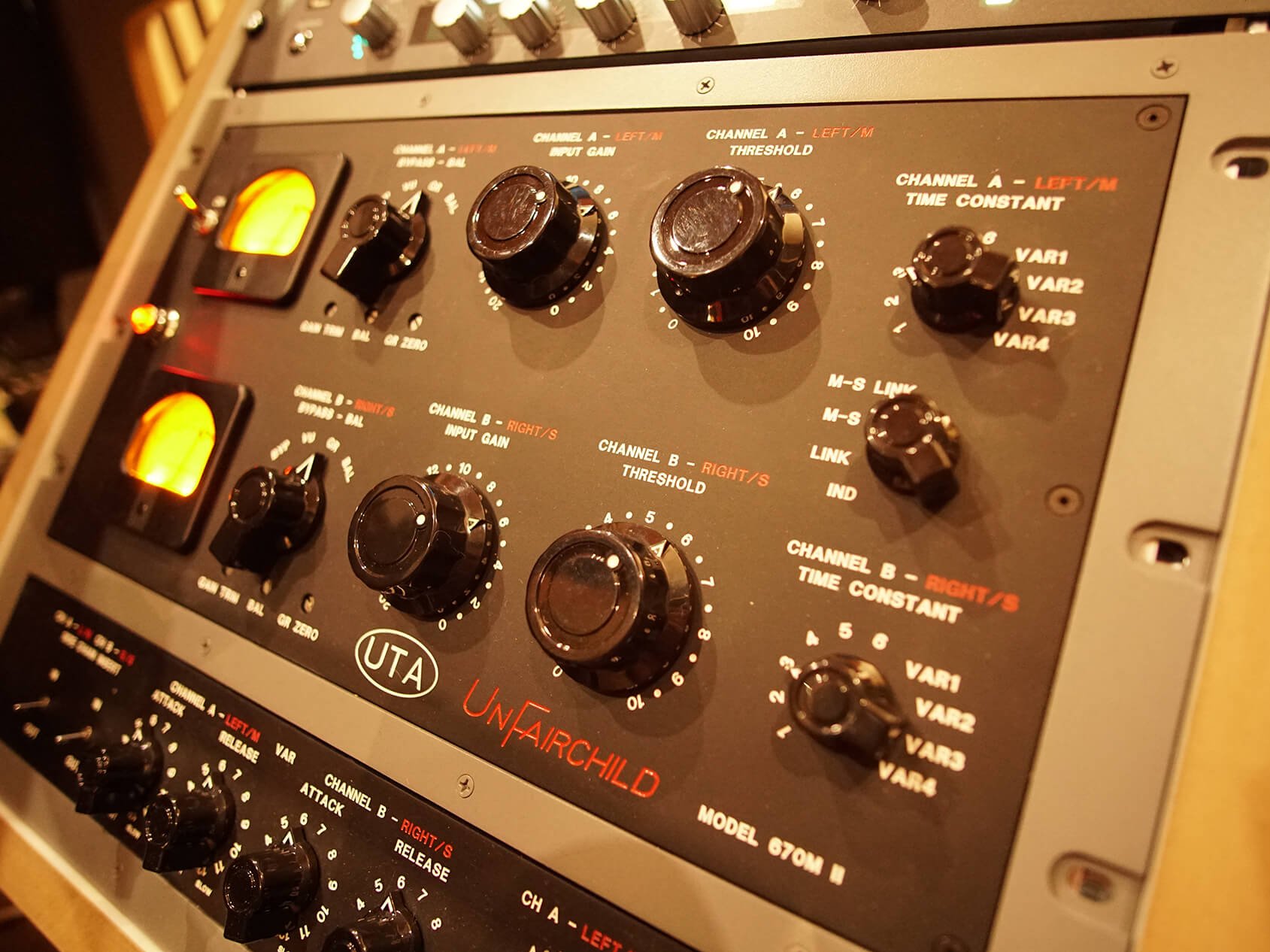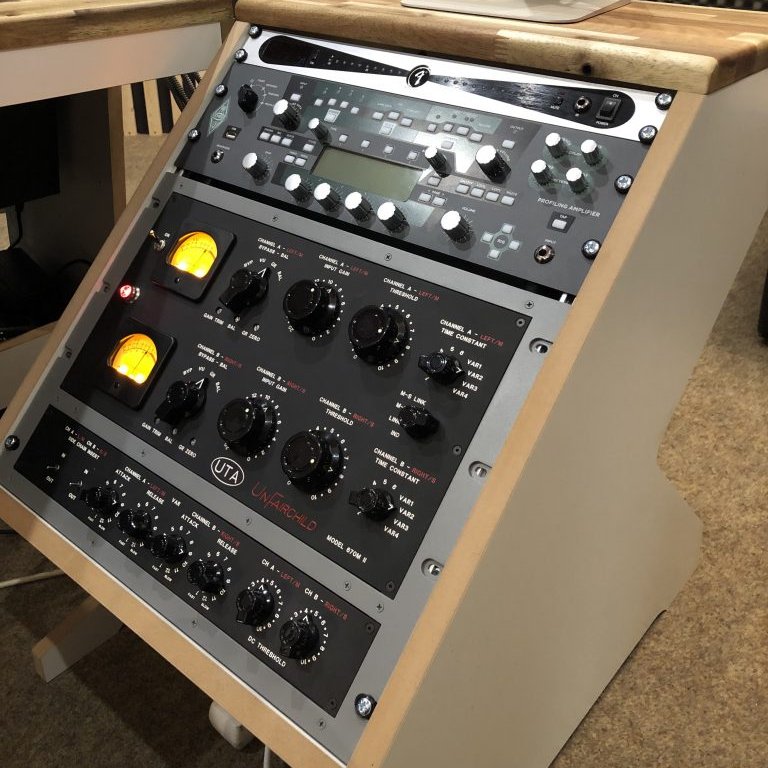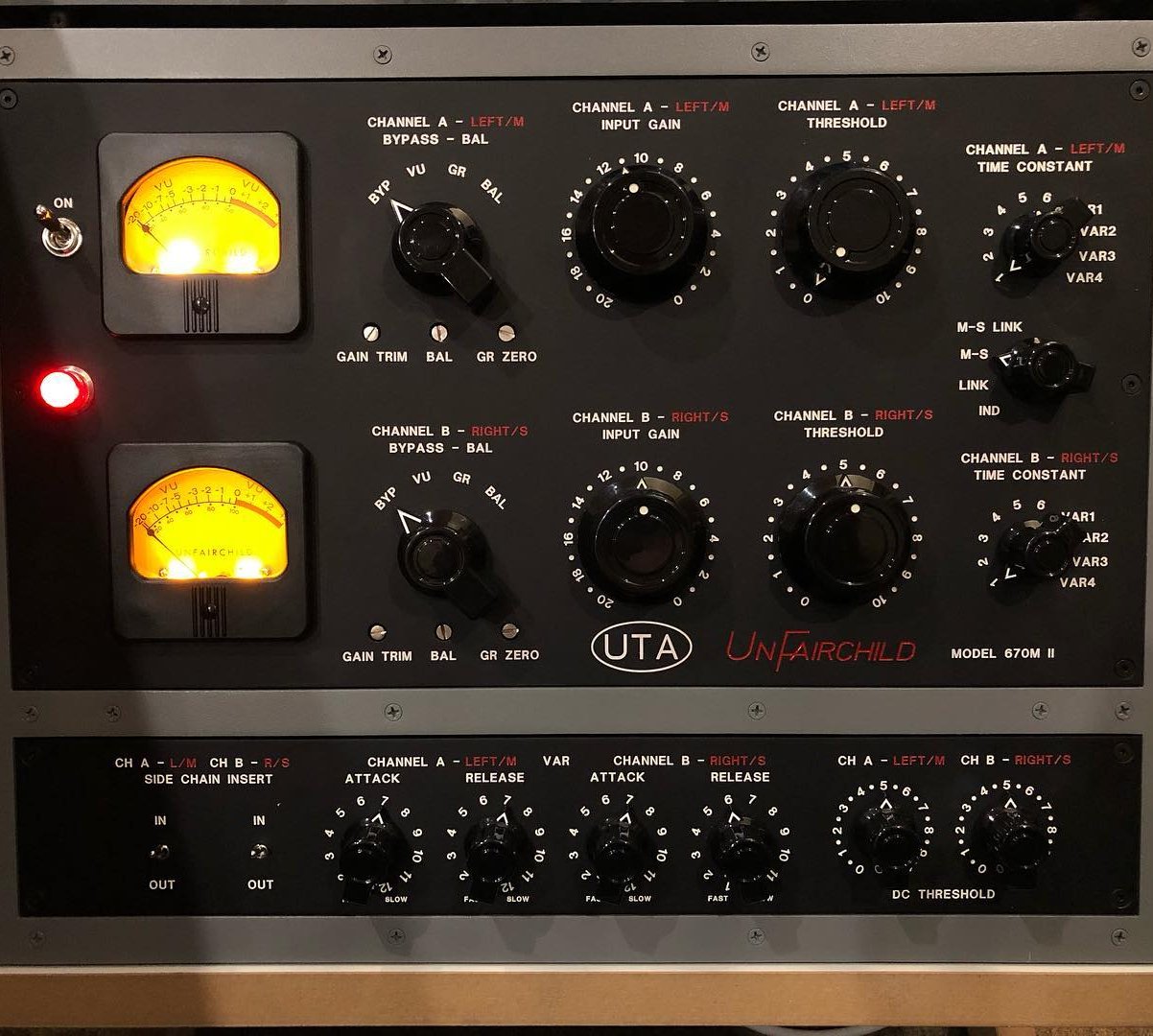The Fairchild 670
The Fairchild 670 is probably the most legendary compressor of all time.
With the Unfairchild 670 MKII, Eric Valentine and his Undertone Audio team have set themselves the goal of developing a "high end" version of the classic 670.
The circuit of the classic Fairchild, designed as a feedback compressor, can be switched to Feedforward via a simple split cable, which results in a very aggressive and punchy sound similar to a DBX160, only with the decisive advantage that the compression is still carried out by a complex tube circuit instead of a VCA.
Another extra feature that makes the Unfairchild fundamentally different from its ancestor are the four additional VAR modes. These make it possible to precisely adjust the compressor's attack and release times to the song. Of course, the original modes 1-6 with their legendary time constants are also on board.

What is also very useful is the possibility to loop a Sidechain EQ into the detector path, which leads to less pumping of the compressor, especially with "bassy" material.
On the Masterbus, the Unfairchild 670 comes with two very useful features, a Stereo Link and an MS Link mode. The MS Link mode in particular has impressed me, as it allows me to precisely control which part of the signal (M or S or a mix) should trigger the detector path of the compressor. Here you can create an incredible amount of sounds to shape the sound.
The last great feature to be mentioned is the DC Threshold on the front panel. The DC offset allows you to control the starting point of the compressor, similar to the ratio known from other compression concepts. If the DC Threshold is set to zero the compressor has a low ratio at 10 a very high one.
Pros and cons:
Pros:
- + Sound
- + Link circuit for MS and Stereo
- + Gridded Potis
- + Variable attack and release times
- + DC Threshold on the front panel
- + Sidechain EQ
- + Can be switched to Feed Forward
- + Bypass switch
- + Output VU meter
Cons:
- - long warm-up time
- - must be calibrated daily
- - very expensive tube exchange (14 tubes)


